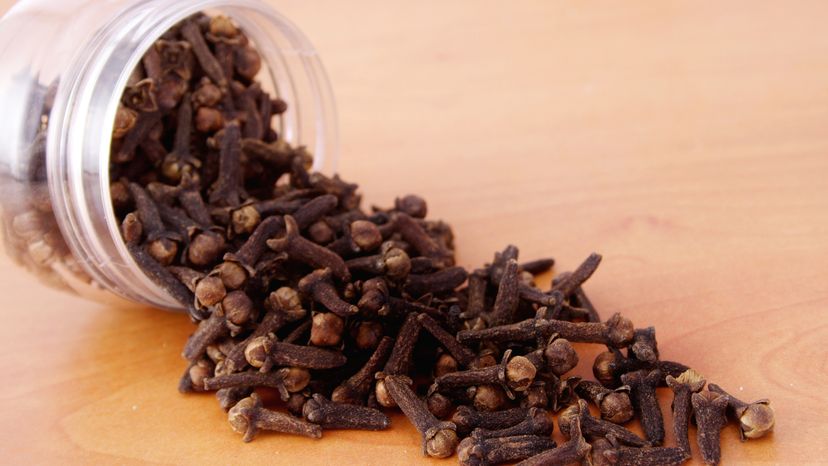
In ancient China, courtiers at the Han court held cloves in their mouths to freshen their breath before they had an audience with the emperor. Today, cloves are still used to sweeten breath. Modern dental preparations numb tooth and gum pain and quell infection with clove essential oil or its main constituent, eugenol. Simply inhaling the fragrance was once said to improve eyesight and fend off the plague.
Clove’s scent developed a reputation, now backed by science, for being stimulating. The fragrance was also believed to be an aphrodisiac. Cloves were so valuable that a Frenchman risked his life to steal a clove tree from the Dutch colonies in Indonesia and plant it in French ground.
Advertisement
Once established, the slender evergreen trees bear buds for at least a century. The familiar clove buds used to poke hams and flavor mulled wine are picked while still unripe and dried before being shipped or distilled into essential oil.
Principal constituents of clove: Eugenol, eugenyl acetate, caryophyllene
Scent of clove: The fragrance is powerful, sweet-spicy, and hot, with fruity top notes.
Therapeutic properties of clove: Antibacterial, antifungal, antihistamine; decreases gas and indigestion, clears mucous from the lungs, expels intestinal worms
Uses for clove: As an antiseptic and pain-reliever, clove essential oil relieves toothaches, flu, colds, and bronchial congestion. But don’t try to use it straight on a baby’s gums for teething as is often suggested, or you may end up with a screaming baby because it tastes so strong and hot. Instead mix only two drops of clove bark oil in at least a teaspoon of vegetable oil. It can still be hot, however, so try it in your own mouth first. Then apply it directly to the baby’s gums. In a heating liniment, clove essential oil helps sore muscles and arthritis.
Mix 30 drops of clove essential oil in one ounce of apple cider vinegar, shake well, and dab on athlete’s foot. Researchers have found that the spicy aroma of clove reduces drowsiness, irritability, and headaches.
Warnings for clove: The essential oil irritates skin and mucous membranes, so be sure to dilute it before use. Clove leaf is almost pure eugenol; do not use it in aromatherapy preparations.
Advertisement